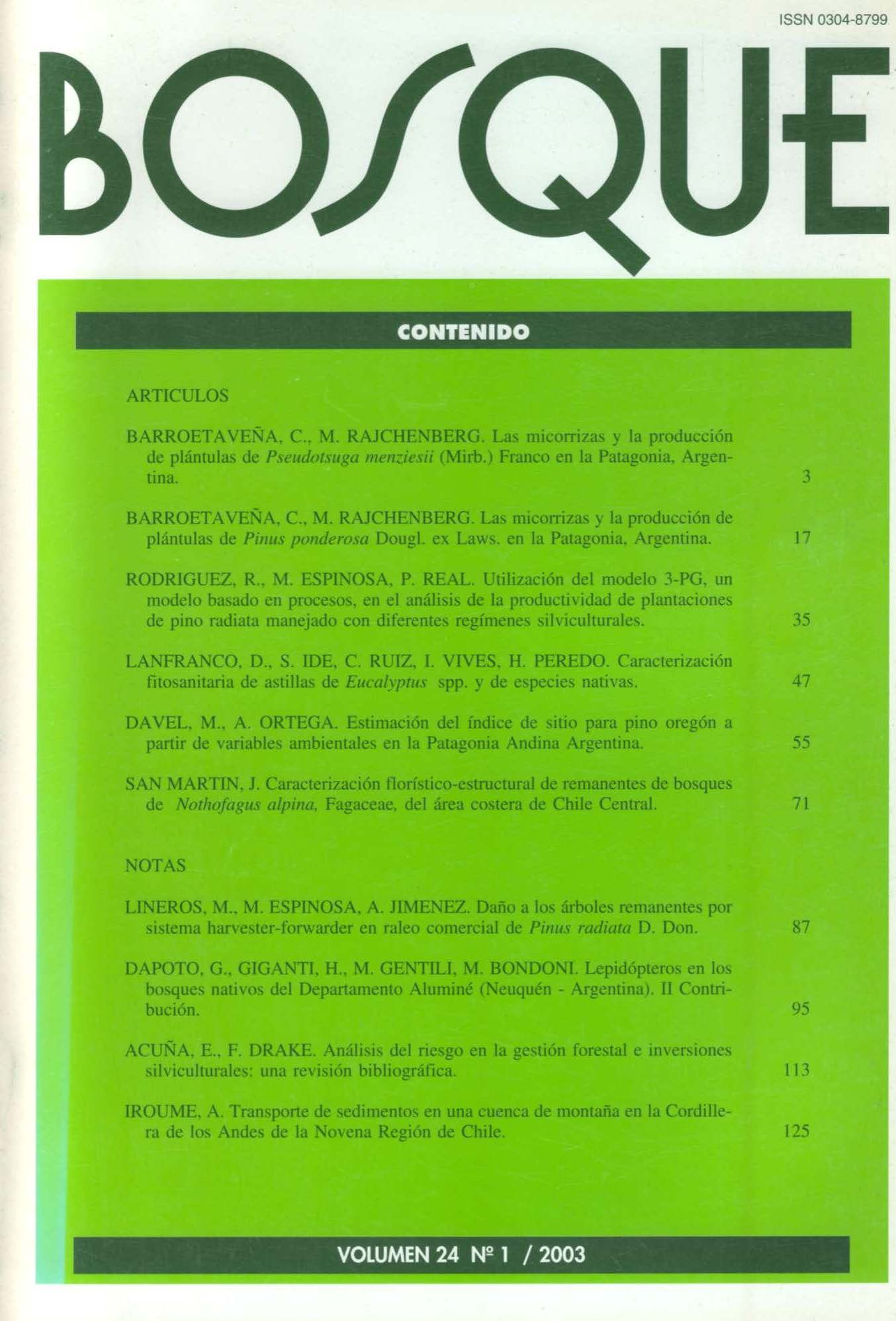Using the 3-PG in the analysis of productivity of radiata pine plantations under different silvicultural regimes
Main Article Content
Abstract
The effects of both crown structure and fertilization regime on productivity were studied. We compared the growth and development of stands managed with silvopastoral methods with those of a traditionally managed stand. A process-based model, designated 3-PG and validated by stem analysis, was used to estimate growth. We concluded that the leaf area index was strongly controlled by the design of the plantation and its final density. The fertilization regime had a positive effect on the leaf area index but its potential was limited by crown structure. Under the traditional forestry regime, the increase in stem-wood biomass was strongly related to the leaf area index. However, in stands under silvopastoral management, the increase is attributable to changes in allocation from the biomass of the fine roots, as an effect of the fertilization regime. Because of the effect of thinning on crown structure, the final wood production was more affected by thinning than by the availability of the site resources. Therefore, maximization of wood production will depend upon the combined management of site resources with the intensity of and opportunity for thinning.

